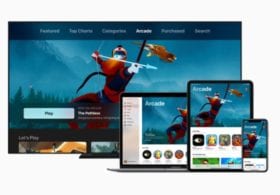
By Brendan Norman, Co-founder & CEO of Classify
 The ad tech industry is at an inflection point. With programmatic digital media spend poised to surpass $200 billion by 2026, the complexity that has long characterized this ecosystem is finally being dismantled. The drive toward a more efficient, valuable, and transparent future is being powered by two interconnected forces: a commitment to fundamental simplification and the maturation of AI.
The ad tech industry is at an inflection point. With programmatic digital media spend poised to surpass $200 billion by 2026, the complexity that has long characterized this ecosystem is finally being dismantled. The drive toward a more efficient, valuable, and transparent future is being powered by two interconnected forces: a commitment to fundamental simplification and the maturation of AI.
Here are my two key predictions on how these forces will redefine ad tech in the coming years.
1: Agentic AI and ‘Vibe Marketing’: Context as the New Creative Currency
The next wave of marketing will be driven by what is emerging as Agentic AI. We are witnessing a profound evolution away from outdated, static, identity-based targeting – the kind that relies on tracking individuals across the web – toward a sophisticated approach rooted in real-time context and content adjacency.
This evolution is fundamentally changing the role of the media buyer. Agentic AI systems will soon allow buyers to activate campaigns using natural language commands. This concept, which I call “vibe marketing,” enables a media buyer to define the desired emotional or topical ‘vibe’ for a campaign, with the AI autonomously generating, shaping, and delivering ad placements that genuinely resonate.
The shift is dramatic: we are moving from simply knowing who a person is, to understanding the mood they are in and the environment they are engaging with. This focus ensures that campaigns not only cut through the noise but align with the audience’s emotional and environmental state. Context, in this sense, transcends simple placement; it becomes the most critical factor in the creative and execution process, ensuring a valuable, non-disruptive exchange for consumers.
2: Standardization is the Strategy: Open Protocols Restore Value
The current state of ad tech is unsustainable. It’s a complicated maze of intermediaries, opaque handoffs, and value-destroying waste, which erodes margins for publishers and complicates the verification of true ROI for advertisers. To move forward, simplification is not merely an option—it is the strategy.
The Advertising Context Protocol (AdCP) is quickly emerging as the essential standardized layer needed to streamline the tech stack. Backed by founding and launch members including Yahoo, PubMatic, Scope3, Classify, and The Weather Company, AdCP serves as a universal language for context.
This standardized protocol is a direct response to the crisis of complexity. By creating a transparent connective tissue, AdCP directly links Agentic AI and LLMs to relevant advertising opportunities. The result is a system that cuts out unnecessary intermediaries and countless handoffs.
The outcome is a win-win for the ecosystem:
- For Advertisers: They gain greater transparency and a clearer, shorter path to measurable business outcomes, shifting the focus from vague targeting metrics to tangible, quantifiable results.
- For Publishers: They regain control over their inventory and secure a far greater share of the ad dollar.
When open protocols reduce fragmentation and complexity, intermediaries that solely facilitate transactions become obsolete. This fosters a more direct, value-based relationship between the content creator (the publisher) and the content funder (the advertiser). Simplification, driven by protocols like AdCP, will be the bedrock for sustainable growth and value restoration in 2026.
As Agentic AI and AdCP drive the industry toward a simpler, context-driven future, we must ensure these powerful innovations promote wider accessibility and do not inadvertently reinforce centralized control. The greatest challenge now is to guarantee that a smarter, simplified ad tech ecosystem benefits all players equally.







